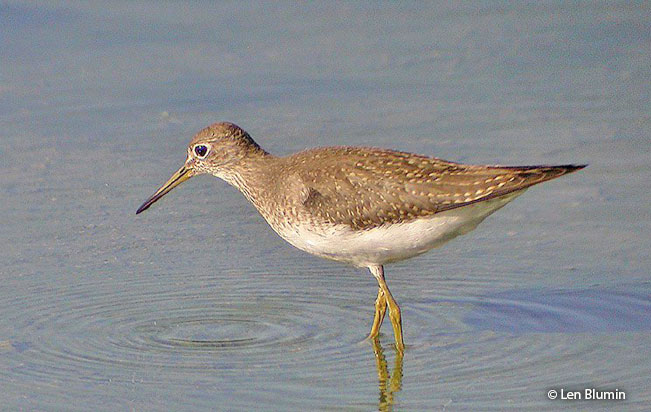Order: Charadriiformes | Family: Scolopacidae | IUCN Status: Least Concern

Age: Adult | Sex: Unknown | Loc. Southeast Peru

Age: Adult | Sex: Unknown | Loc. North America

Age: Adult | Sex: Unknown | Loc. North America

Age: Adult | Sex: Unknown | Loc. North America
Status: The Solitary Sandpiper is an uncommon to rare Boreal Migrant found in a number of habitats and elevations throughout Peru. It is common during the months of September through April and rare throughout the rest of the year as some birds overwinter in South America. It also occurs in Co, Ec, Br, Bo, and Ch.
Name in Spanish: Playero Solitario.
Sub-species: Solitary Sandpiper (Tringa solitaria cinnamomea), Brewster 1890.
(T. s. solitaria), A. Wilson, 1813.
Meaning of Name: Tringa: Gr. A white wagging tail bird mentioned by Aristotle without being completely identified, but taken by later authors as a torch or wagtail. solitaria: L. solus= lonely, solitary.
 Voice
VoiceReferences:
-
- Species range based on: Schulenberg, T. S., D. F. Stotz, and L. Rico. 2006. Distribution maps of the birds of Peru, version 1.0. Environment, Culture & Conservation (ECCo). The Field Museum. http://fm2.fieldmuseum.org/uw_test/birdsofperu on 01/01/2015.